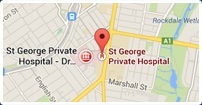Moans & groans: Renal & ureteric stone disease.
Twenty five percent of patients have a family history of kidney Stones. This problem affects males three times more commonly than females. The life time risk of developing a symptomatic stone by 70 years of age. Is 13% for men & 5% of women.
Patients typically present with an acute episode of renal or ureteral colic as a result of a stone obstructing the urinary tract. Classically, the pain is sudden & severe, occurring in the night or early hours of the morning. The location of the pain is variable, ranging from flank to abdominal pains radiating towards the groin, depending on the position of the stone. There are several common anatomical locations where a stone can impact causing obstruction & severe pain.
Presentation can also include urinary symptoms such as frequency & urgency, for more distal ureteric stones.
In terms of diagnostic imaging, a plain x-ray of the abdomen to include kidney, ureter, bladder & a non-contrast CT scan of the abdomen & pelvis, will allow most stones to be identified & their complication assessed.
The recurrence rate for renal colic is about 7% per year with 50% of patients experiencing a further attack within 10 years.
The majority of symptomatic renal or ureteric stones require surgical management. Medical therapy for stone disease is based on stone analysis & only 5 – 10% of stones are composed of uric acid which can potentially be dissolved using medications. Further evaluation for a metabolic cause of stone disease will depend on whether the patient is a first or recurrent stone former.
Management of symptomatic stone disease will depend on a number of factors: the location, size & number of stones. Other important management considerations include whether there are signs of infection, renal impairment or ongoing pain despite the use of adequate pain relief.
As a general rule, all patients should be encouraged to increase fluid to at least 2 litres per day, as hydration is effective in reducing stone recurrence. Furthermore, they should avoid dietary excesses & aim to decrease animal protein & salt, while moderating calcium in their diet.
Treatment options can range from conservative management with an alpha blocker to surgical intervention. Open surgery for stone disease is rarely performed in the modern era. Less invasive procedures such as extracorporal Shockwave lithotripsy (ESWL) , rigid or flexible ureteroscopy & percutaneous nephrolithotomy (PCNL) are now the mainstay of surgical therapy.
At Shire urology, we provide all the latest surgical techniques available to manage & individualize your stone treatment .
DR TRU NGO
BSc (MED) MB BS FRACS
UROLOGICAL SURGEON.
Abstract as written for St George & Sutherland Leader (Tuesday June 7,2011)








